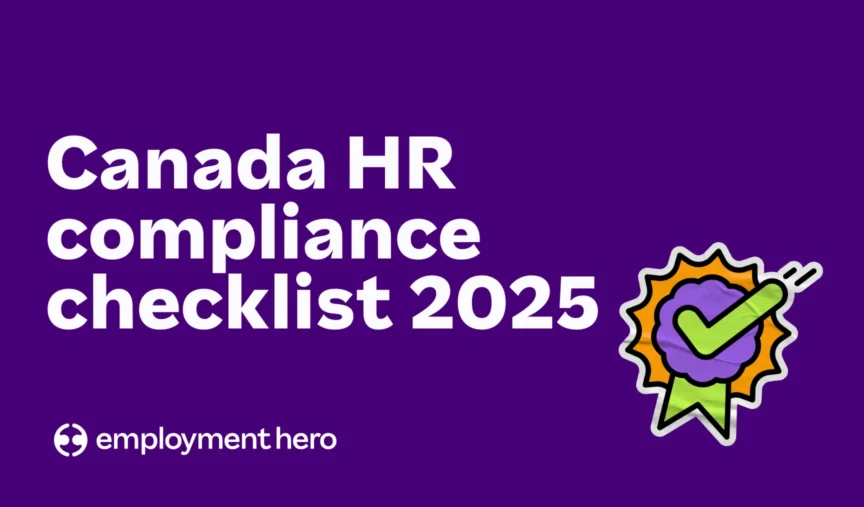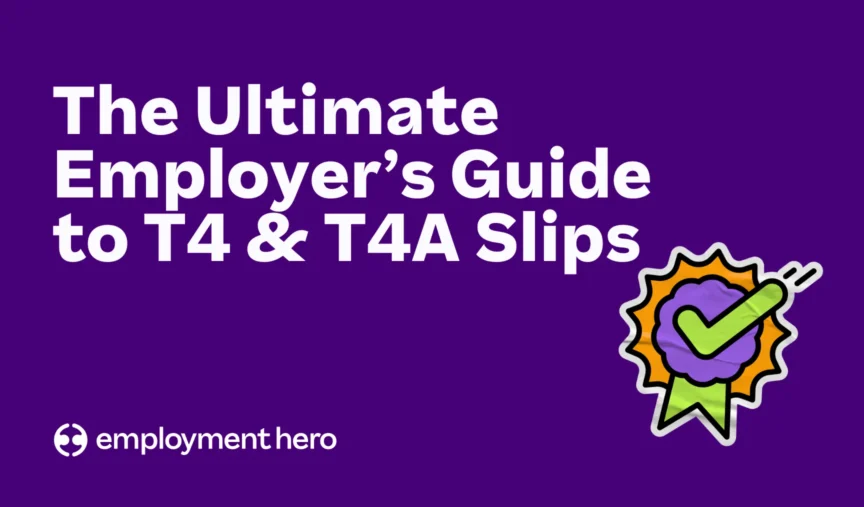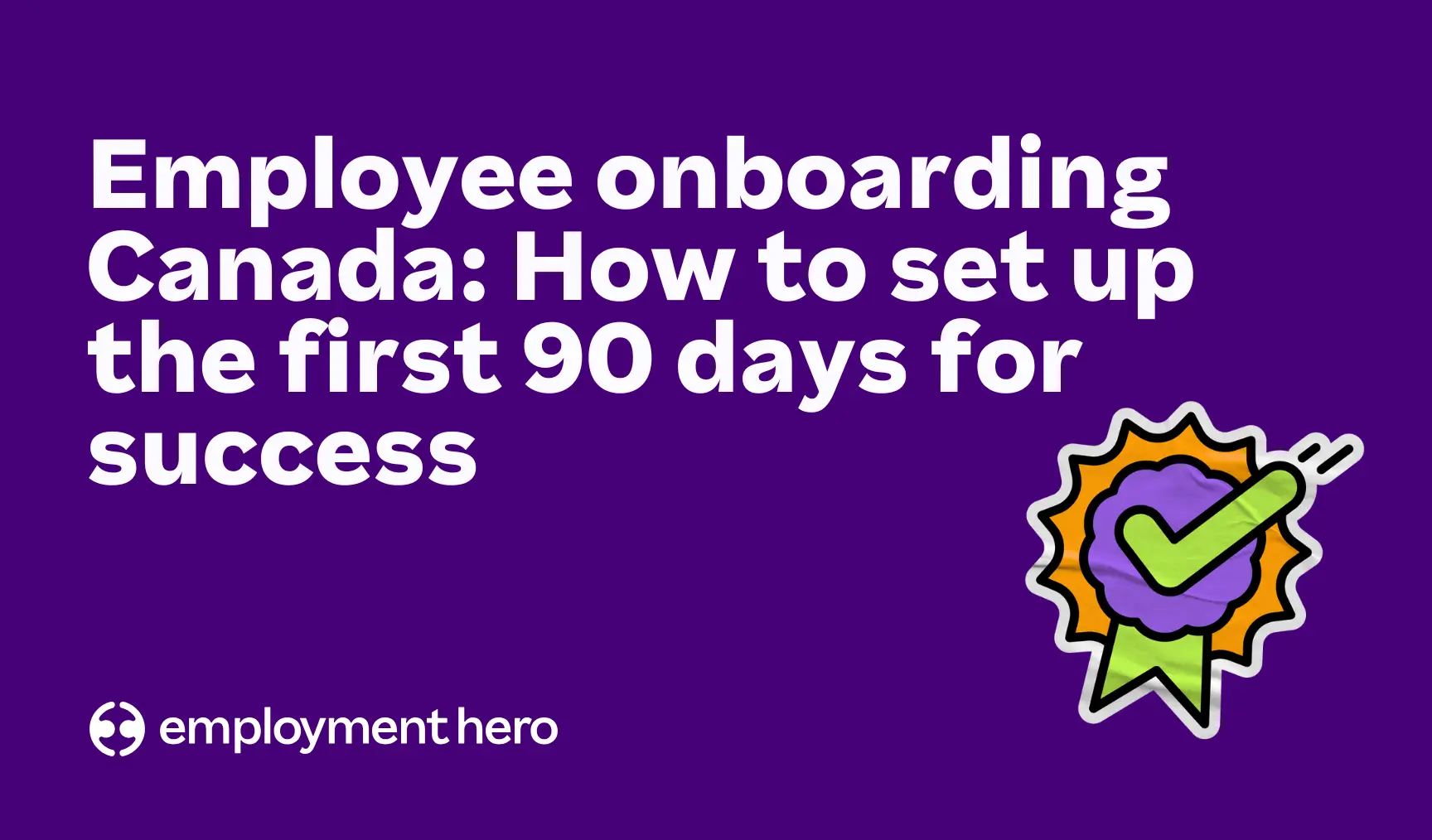HR compliance checklist Canada 2025: What employers need to know
Published
HR compliance checklist Canada 2025: What employers need to know
Published

Every January, Canadian employers take a deep breath and ask the same question: are we truly compliant or just hoping we are? Payroll’s wrapped, T4s are filed, yet beneath the surface, HR obligations shift quietly. Privacy laws tighten. Provinces update leave entitlements. Pay transparency rules evolve. One missed update can undo a year of good work.
Compliance isn’t a one-time project. It’s a living, ongoing discipline. Employers who treat it that way — who review, adapt and document — stay ahead. Those who don’t often learn the hard way.
What is in this checklist?
This checklist is a roadmap for 2025, built for Canadian SMBs that don’t have legal teams on call. It breaks down every compliance area — workplace safety, privacy, employment standards, leave, records and employee rights — with real-world guidance and examples.
Each section outlines what the law expects and what good employers actually do. Use it to audit your systems, close the gaps and plan for the year ahead.
Workplace harassment and violence prevention
Every workplace must be safe, both physically and psychologically. Under the Canada Labour Code and provincial human rights laws, employers must create and maintain zero-tolerance environments for harassment, violence and discrimination.
That means a written policy, a confidential reporting process and regular training for everyone. It also means naming a specific contact for complaints and tracking investigations to completion. If your team is hybrid, your policy must include online channels too — harassment can happen over chat as easily as in the hallway.
Employers under federal jurisdiction must meet the Work Place Harassment and Violence Prevention Regulations. These require annual reporting and clear documentation of every case. If you haven’t updated your training or reporting templates recently, now’s the time.
Occupational safety and health
Safety extends beyond conduct. Under Part II of the Canada Labour Code and each province’s OHS authority — from WorkSafeBC to Ontario’s WSIB — employers must identify hazards, train workers and cooperate during inspections. Regular safety audits and mandatory training are your proof of due diligence.
Even small teams need written procedures for reporting incidents, investigating injuries and recording inspections. Build these checks into your quarterly rhythm so safety becomes routine, not reactive.
For hybrid or remote staff, extend your policy to include home office ergonomics and incident reporting. Our remote work policy guide can help you outline expectations for every work location.
Privacy and data protection
Employee data is personal information. That makes HR the gatekeeper. Under PIPEDA and provincial privacy laws, you must collect, use and store employee data securely and with consent. Quebec’s Law 25 adds requirements for a named privacy officer and a breach response plan.
Start by mapping what data you hold and where it lives. Limit access, set deletion timelines and review permissions regularly. Privacy training should be built into onboarding, not treated as an afterthought.
Our employee onboarding checklist includes practical ways to embed privacy awareness from day one.
Accurate employee records
The Canada Revenue Agency requires employers to keep payroll, deductions, vacation and leave records for at least six years after the related tax year. Most provinces expect even longer retention for employment-related documents.
Store accommodation or medical records separately to protect privacy. Leave and overtime records have their own clocks under some labour codes, so label and date them clearly.
Digital HR systems like Employment Hero HR software can automate this — timestamping every change and keeping your records audit-ready.
Employee handbook and mandatory policies
Your employee handbook isn’t just an introduction to the business. It’s your compliance backbone. It sets expectations, outlines rights and protects you when disputes arise.
Every handbook should include policies on harassment and violence prevention, health and safety, privacy, leave, scheduling and conduct. For 2025, a few stand out: Ontario employers with 25 or more staff must have written electronic monitoring and disconnecting-from-work policies, and Quebec’s Bill 96 requires French-language versions of key documents.
Go beyond the basics. Add policies for digital communication, social media and hybrid work. For help aligning policies with performance goals, explore our performance management resource.
Policies and procedures
Beyond the handbook, maintain a policy register that tracks what’s required, who owns it and when it was last updated. At minimum, you should document and distribute policies on harassment, health and safety, privacy, accessibility and leave. In Ontario, you’ll also need electronic monitoring and disconnecting-from-work policies. Review each one annually and record who received it — distribution logs are your proof that compliance isn’t just written, it’s shared.
Employment standards, wages and hours

Employment standards form the base of every compliance checklist. They define how employees are paid, when they rest and how leave accrues. Each province sets its own minimum wage, overtime thresholds, scheduling rules and vacation entitlements.
Ontario’s overtime starts after 44 hours a week, while Quebec’s begins at 40. Most provinces require at least one 30-minute unpaid meal break every five hours and daily rest periods. Ontario and BC expect advance notice for scheduling changes and limits on split shifts. Averaging or compressed workweeks need signed employee consent renewed annually. Keep those agreements on file — they’re among the first documents inspectors ask for.
Regular wage reviews aren’t just good practice — they’re a legal necessity. Keep HR and payroll systems synced so no one is under- or overpaid.
Leave policies
Leave is a legal right, not a courtesy. Employees across Canada are entitled to protected time away from work — parental, sick and compassionate leaves are the key ones. Federally regulated employees now have up to ten paid medical leave days each year, while provincial rules vary. Quebec’s parental insurance program also sets its own payment terms.
Clear communication prevents compliance gaps. Employees should know how to request leave, what proof is needed and how benefits continue during absences. Employers must track each leave type separately, record it for payroll and guarantee reinstatement when the employee returns.
Transparency builds trust — balances visible, policies clear, approvals consistent.
Employee benefits
Benefits show up in every pay cycle but sit at the heart of compliance. Statutory benefits — CPP or QPP contributions, Employment Insurance and workers’ compensation — apply to everyone, including remote staff. Under the CRA’s 2024 policy, province of employment is tied to the establishment an employee reports to, not where they live.
Optional benefits like health coverage or RRSP matching aren’t legally required, but once offered, they’re contractual. Many provinces require continued coverage during protected leaves, even if the employee is unpaid. Audit your benefits yearly to confirm they still meet legal and plan requirements.
Workplace accommodations
The Canadian Human Rights Act and provincial codes require employers to accommodate employees’ physical, mental or religious needs up to the point of undue hardship. That can mean modified duties, adjusted hours or alternative observance days.
Document each accommodation request and review it regularly. Train managers to recognize when an employee might need support and how to respond. A consistent, compassionate approach protects both your people and your compliance standing.
Remote and hybrid work compliance

Remote work isn’t exempt from regulation. The CRA’s 2024 province-of-employment policy affects payroll deductions for fully remote employees. Confirm each person’s attachment to a specific establishment and apply that province’s tax tables.
Health and safety laws also extend to home offices. Require employees to complete an ergonomic checklist and report incidents promptly. Keep privacy front of mind — secure devices, manage access and update your remote work policy guide annually to reflect new risks.
Termination procedures
Ending employment is one of the most regulated actions in HR. Each province defines minimum notice periods, severance pay and ROE requirements. The Record of Employment must be issued within five days of the interruption of earnings.
Confirm an employee’s probation status and tenure before finalizing notice or pay. Missteps here often lead to disputes. You can model your approach on our completed probation letter template.
Keep all termination documentation — contracts, reviews and correspondence — securely stored.
Employee file
Every employee file should include the essentials: signed offer, role description, tax forms, performance reviews and pay changes. Keep medical or accommodation records in a separate, restricted folder to preserve confidentiality. Review and archive files according to CRA and provincial retention rules to stay compliant and audit-ready.
Pay equity and transparency rules
Equal pay for equal work is the law. Federally regulated employers must follow the Pay Equity Act, developing plans and filing annual reports. Provinces are catching up: BC’s Pay Transparency Act begins phased reporting in 2025, with smaller employers joining by 2026.
For Ontario employers, new job posting rules — including pay ranges and AI disclosure — are next. Get ahead by auditing compensation structures now. Transparency isn’t just compliance; it’s credibility.
Compliance audits
Most compliance issues come from drift, not defiance. Set a rhythm that keeps you current:
Q1: Update policies, post new employment standards and check wage changes
Q2: Refresh training on safety, harassment and accessibility
Q3: Review leave balances and benefit eligibility
Q4: Audit records, verify ROE readiness and prep for next year’s updates
Consistent review turns compliance from a scramble into a steady pulse.
Training and ongoing compliance education

Regulations shift, so your team must too. Core training every employer should deliver includes WHMIS, harassment and violence prevention, accessibility awareness and supervisor safety. Track completion dates, not attendance lists. Training logs are often the first documents inspectors request.
Short, regular refreshers keep compliance knowledge alive and make it part of everyday operations, not an annual checkbox.
Hiring and recruitment
Compliance begins before day one. Job postings must follow equal opportunity and accessibility standards. Advertised roles should reflect pay transparency rules and disclose any AI-based screening tools.
Interviews must accommodate candidates’ needs — whether that means accessible formats, adjusted times or technology. Document how you manage accommodations and store interview records securely.
Our employee onboarding checklist can help you map the right steps once offers are accepted.
Download the checklist
Compliance isn’t about fear — it’s about clarity. When employees understand their rights and managers know their responsibilities, trust takes root.
You don’t need to memorize every regulation. You just need a system that keeps you honest and a checklist that keeps you ready.
Download the HR Compliance Checklist
Related Resources
-
 Read more: HR compliance checklist Canada 2025: What employers need to know
Read more: HR compliance checklist Canada 2025: What employers need to knowHR compliance checklist Canada 2025: What employers need to know
This HR compliance checklist covers workplace safety, privacy, employee records and province-specific obligations for employers.
-
 Read more: T4 guide for employers: Preparing and filing T4 and T4A slips in 2026
Read more: T4 guide for employers: Preparing and filing T4 and T4A slips in 2026T4 guide for employers: Preparing and filing T4 and T4A slips in 2026
Learn how to prepare, reconcile and file T4 and T4A slips. This step-by-step T4 guide for employers explains deadlines, boxes…
-
 Read more: Employee onboarding Canada: How to set up the first 90 days for success
Read more: Employee onboarding Canada: How to set up the first 90 days for successEmployee onboarding Canada: How to set up the first 90 days for success
Learn how to create an effective employee onboarding plan. Explore a 30-60-90 day framework, compliance requirements and strategies for long-term…

















